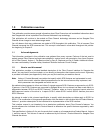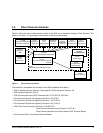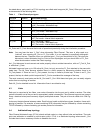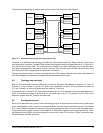
4 Fibre Channel Interface Manual, Rev. D
Networks
Networks allow many devices to communicate with each other at will. This is usually accompanied by software
support to route transactions to the correct provider and to verify access permission. Networks are used for
transferring data with “error-free delivery” and voice and video where “delivery on time” is the primary require-
ment with error-free delivery being a secondary consideration. For example, when transferring video, it is more
important to provide on-time delivery of data to prevent loss of video frames than to lose one or two pixels in a
video frame.
2.3 The advantages of Fibre Channel
In addition to the channel/network support, Fibre Channel:
• Supports multiple physical interface types.
• Provides a means to interconnect physical interface types.
• Provides high-speed data transfer rates much faster than parallel SCSI.
• Separates the logical protocol being transported from the physical interface—this allows multiple protocols
to be transported over a common physical interface.
• Allows increased cable lengths. You can have 30 meters between each device when using twisted pair cop-
per media. Note that this 30 meters is between each device, not the total length (multiply the number of
devices by 30m to obtain total allowable length). Fiber optic media extended this even further by allowing
distances of 10km between each device.
• Increases the potential number of devices connected. Just one private arbitrated loop can have up to 125
devices attached. Even more can be attached in non-participating mode. Also, multiple loops can be
attached to fabrics to significantly increase the number of devices attached.
• Uses asynchronous transmission to fully utilize the available bandwidth.
• Allows flexibility in transfer rates, distances, media types, and protocols.


















